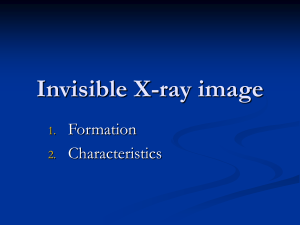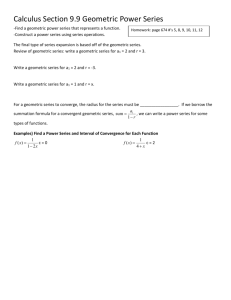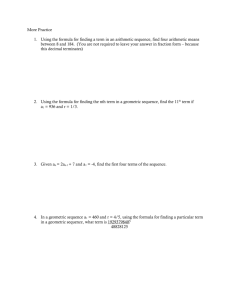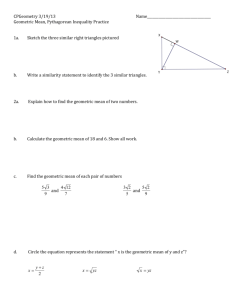Geometric Unsharpness
advertisement
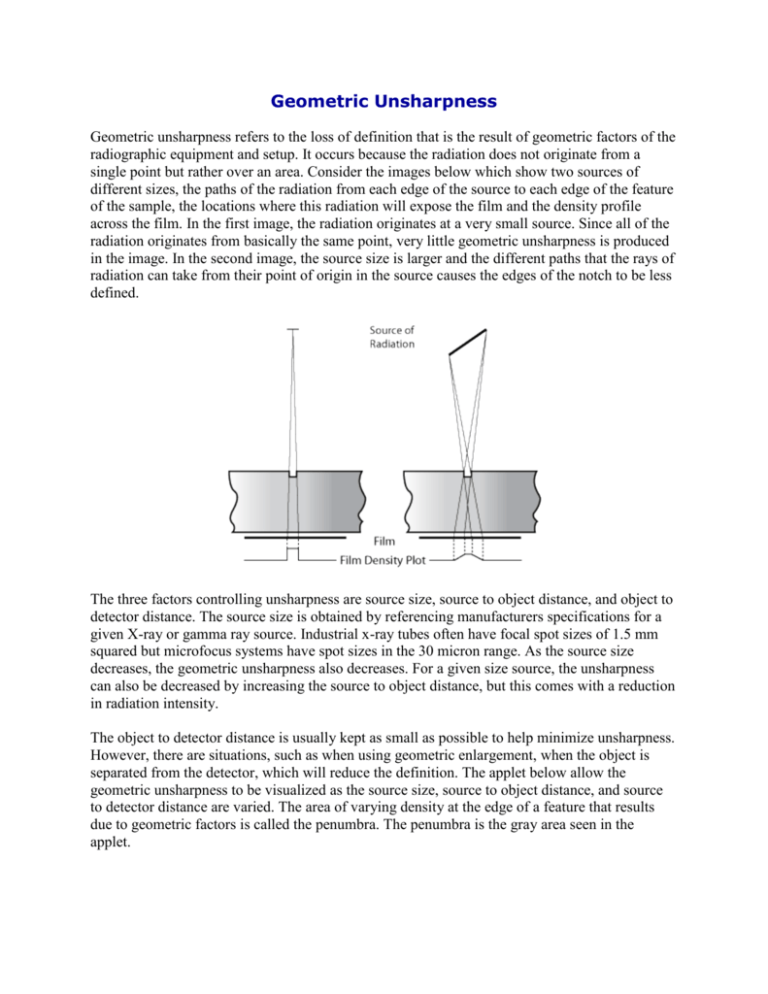
Geometric Unsharpness Geometric unsharpness refers to the loss of definition that is the result of geometric factors of the radiographic equipment and setup. It occurs because the radiation does not originate from a single point but rather over an area. Consider the images below which show two sources of different sizes, the paths of the radiation from each edge of the source to each edge of the feature of the sample, the locations where this radiation will expose the film and the density profile across the film. In the first image, the radiation originates at a very small source. Since all of the radiation originates from basically the same point, very little geometric unsharpness is produced in the image. In the second image, the source size is larger and the different paths that the rays of radiation can take from their point of origin in the source causes the edges of the notch to be less defined. The three factors controlling unsharpness are source size, source to object distance, and object to detector distance. The source size is obtained by referencing manufacturers specifications for a given X-ray or gamma ray source. Industrial x-ray tubes often have focal spot sizes of 1.5 mm squared but microfocus systems have spot sizes in the 30 micron range. As the source size decreases, the geometric unsharpness also decreases. For a given size source, the unsharpness can also be decreased by increasing the source to object distance, but this comes with a reduction in radiation intensity. The object to detector distance is usually kept as small as possible to help minimize unsharpness. However, there are situations, such as when using geometric enlargement, when the object is separated from the detector, which will reduce the definition. The applet below allow the geometric unsharpness to be visualized as the source size, source to object distance, and source to detector distance are varied. The area of varying density at the edge of a feature that results due to geometric factors is called the penumbra. The penumbra is the gray area seen in the applet. Codes and standards used in industrial radiography require that geometric unsharpness be limited. In general, the allowable amount is 1/100 of the material thickness up to a maximum of 0.040 inch. These values refer to the degree of penumbra shadow in a radiographic image. Since the penumbra is not nearly as well defined as shown in the image to the right, it is difficult to measure it in a radiograph. Therefore it is typically calculated. The source size must be obtained from the equipment manufacturer or measured. Then the unsharpness can be calculated using measurements made of the setup. For the case, such as that shown to the right, where a sample of significant thickness is placed adjacent to the detector, the following formula is used to calculate the maximum amount of unsharpness due to specimen thickness: Ug = f * b/a f = source focal-spot size a = distance from the source to front surface of the object b = the thickness of the object For to the the case when the detector is not placed next sample, such as when geometric magnification is being used, the calculation becomes: Ug = f* b/a f= a= b= to the source focal-spot size. distance from x-ray source to front surface of material/object distance from the front surface of the object detector Ug = f * b/a f= source focal-spot size a = distance from the source to front surface of the object b = the thickness of the object For the case when the detector is not placed next to the sample, such as when geometric magnification is being used, the calculation becomes: Ug = f* b/a f = source focal-spot size. a = distance from x-ray source to front surface of material/object b = distance from the front surface of the object to the detector



